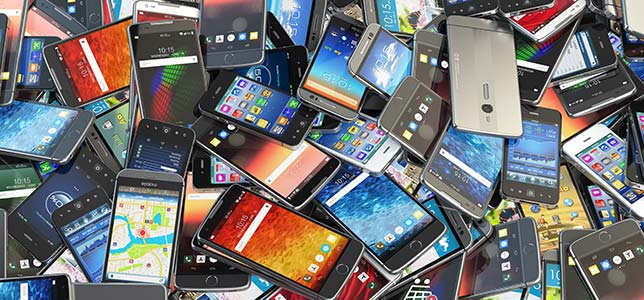Report: Smartphones to See Slow, Steady Growth through 2021

Smartphone sales will continue to grow through 2021 to reach 1.7 billion shipments that year, according to a new forecast from International Data Corp. (IDC).
Up from 1.47 billion in 2016, that forecast would represent a compound annual growth rate (CAGR) of 3.3 percent over five years.
"The big inflection point that everyone is watching for is when the smartphone market experiences its first year-over-year decline," said Ryan Reith, program vice president with IDC's Worldwide Quarterly Mobile Device Trackers, in a prepared statement. "We believe the two main catalysts for continued growth are bringing first-time users onto a smartphone and maintaining life cycles that are close to two years. At the end of 2016, we estimated that about half of the world's population was using a smartphone, which leaves plenty of room for additional first-time users. And, despite very high saturation levels in mature markets like North America, Western Europe, Korea, and Japan, we still see the majority of users replacing their handsets roughly every two years. We expect these trends will hold through the forecast."
Shipments of Android devices will reach 1.276 billion this year for a market share of about 82 percent and 2.3 percent growth compared to last year. The forecast calls for Android shipments to reach 1.479 billion in 2021 for a market share of 85.5 percent and a CAGR of 3.5 percent from 2016-2021.
"The Android OS continues to dominate on a global level, and IDC expects shipments on the platform to slightly outperform the market with 2.3 percent year-over-year growth in 2017," according to a news release. "In terms of volume, Asia/Pacific (excluding Japan) continues to lead the way consuming nearly 55 percent of shipments throughout the forecast period. Growth at the high end from brands such as OPPO, Vivo and Huawei have also led to a 17 percent increase in average selling price (ASP) within the region, showing that the high end has more room to grow. Android ASPs have also risen in other big markets like Latin America, the United States and Western Europe. With many brands opting to push premium phablet offerings to combat the likes of the larger iPhone, devices with screen sizes larger than 5.5 inches should grow 34.5 percent year over year in 2017 with ASPs growing 9.2 percent as a result."
iOS shipments will total 218.7 million units this year, according to IDC. That's good enough for a share of 14.6 percent and growth over last year of 1.5 percent, "a considerable improvement from the 7 percent decline in iPhone shipments in 2016," according to information released by IDC. That growth will continue throughout the forecast period for a CAGR across the five years examined of 3 percent. Market share will improve by the end of the forecast period to 14.4 percent on the strength of 249.3 million sales.
"From there, things only get better for Apple as IDC anticipates the arrival of the iPhone 8 will spur a major upgrade cycle come 2018," according to a news release. "Despite the new device launching later this year, IDC expects a majority of the shipments are likely to land early in 2018. IDC projects 9.1 percent growth in 2018 with the iPhone 8 and the new 7S/7S+ models playing a pivotal part in the near double-digit growth next year."
The future looks pretty grim for devices with other operating systems. IDC predicts 2.7 million shipments for such devices this year for a market share of .2 percent and negative growth of 74.5 percent compared to last year. By 2021, IDC predicts sales of just 1.2 million and a market share of .1 percent. The compound annual growth rate for such devices from 2016 through 2021 will be negative 34.9 percent if the company's forecast proves accurate.
About the Author
Joshua Bolkan is contributing editor for Campus Technology, THE Journal and STEAM Universe. He can be reached at [email protected].